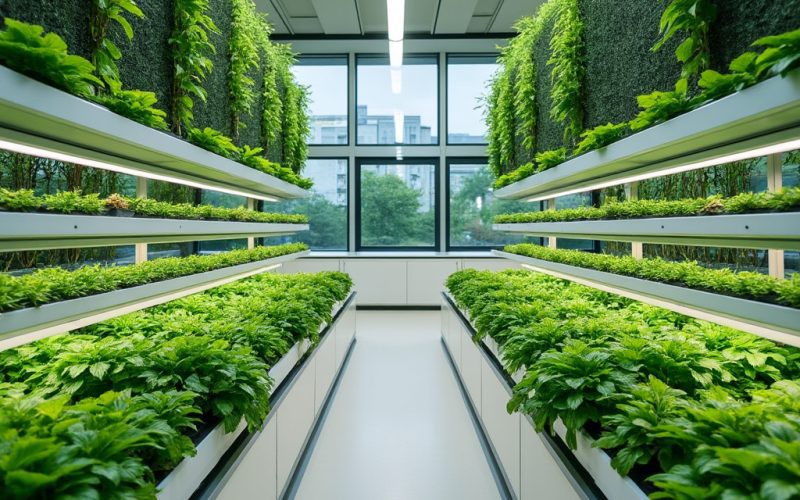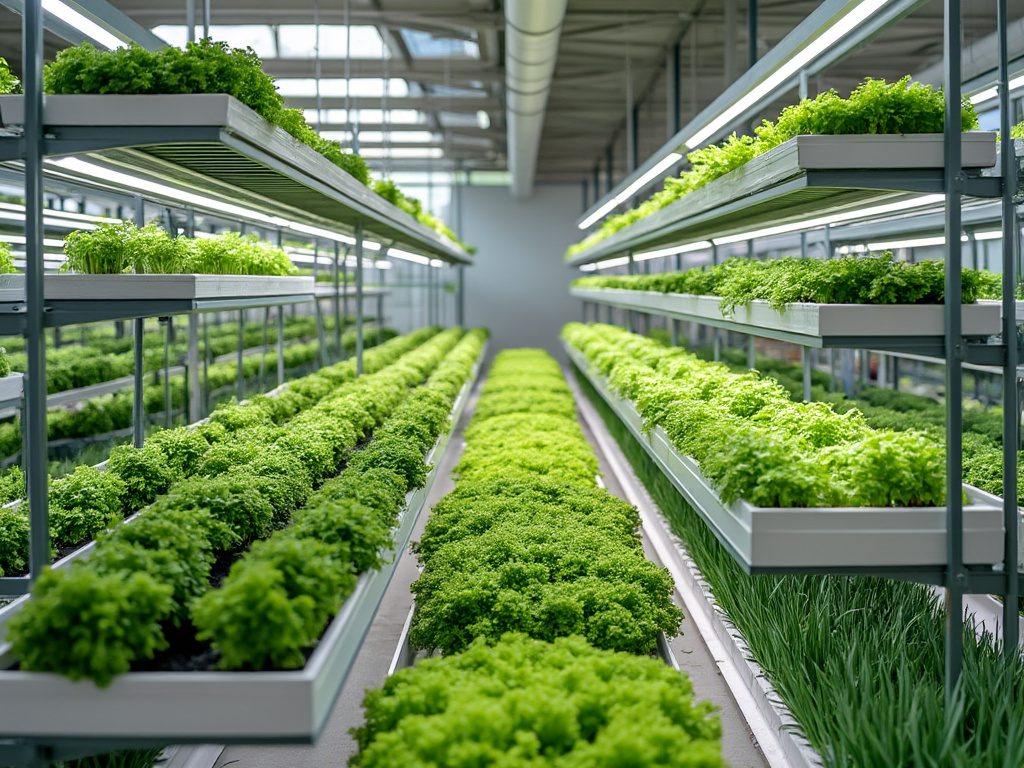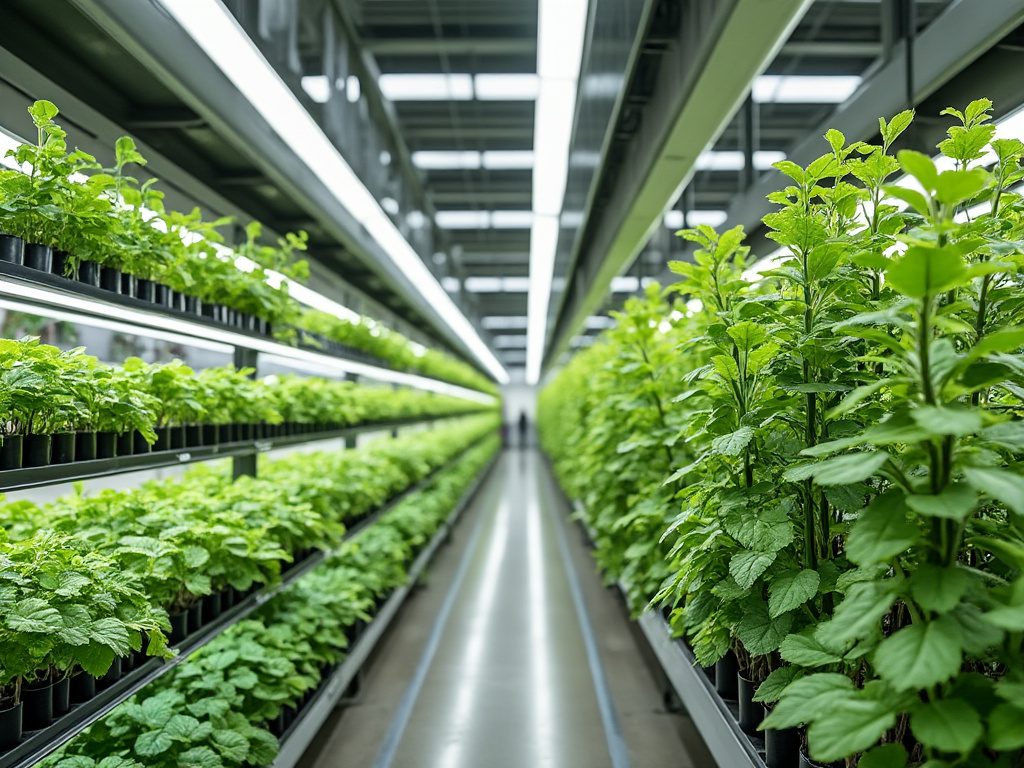
We already addressed vertical gardens outdoors and vertical gardens indoors, today we’ll talk about an idea (one of 59) that students had regarding sustainability: vertical farming in schools.
Apart from providing fresh, locally produced fruit, herbs and vegetables; there is the extra value that teachers can simultaneously educate students about sustainable agriculture, food systems, and environmental stewardship.
Let’s see how schools could embrace and integrate vertical farming, and what the added values are for the schools, teachers, students and the community.
The Need for Sustainable Agriculture in Education

The current food system faces numerous challenges—ranging from the environmental impact of food miles to unsustainable agricultural practices. By incorporating vertical farming, schools can actively reduce their carbon footprint while offering a hands-on learning opportunity for students.
Example: Growing leafy greens, herbs, or vegetables within a school’s vertical garden drastically cuts down the distance food needs to travel. It eliminates the reliance on conventional transportation, reducing the emissions associated with food miles.
Benefits of Vertical Farming in Schools
- Educational Value: Vertical farming offers a rich, interdisciplinary learning experience. Students learn biology through plant growth, environmental science through resource management, and mathematics by measuring yields and optimizing space. It also promotes awareness about where food comes from and how sustainable practices can mitigate environmental impact.Example: Teachers can use the garden to illustrate photosynthesis, water cycles, and plant genetics, linking classroom theory directly to observable, practical examples in the garden.
- Promoting Healthy Eating Habits: Having access to freshly grown produce can inspire students to make healthier food choices. When children are involved in growing their food, they become more inclined to eat fruits and vegetables. Schools can incorporate the harvest into meal plans or after-school programs, promoting healthy, nutrient-rich diets.
- Sustainability Lessons: Vertical farming uses less water and space compared to traditional farming. Schools can demonstrate the importance of conserving resources, using hydroponics or aeroponics to minimize water use. These methods provide a model for more efficient agricultural practices in the face of growing environmental concerns like climate change and resource scarcity.Example: Students could monitor water usage and energy consumption in real-time, learning the importance of resource efficiency and understanding how small-scale initiatives can contribute to larger global solutions.
- Hands-on Learning and Innovation: Vertical farming encourages creative problem-solving and innovation. Students can experiment with new technologies, such as automated irrigation systems, LED lighting for photosynthesis, or renewable energy sources like solar panels to power the garden.
How to Implement Vertical Farming in Schools
- Assess Available Space: Vertical farming systems require less ground space, making them ideal for urban schools or those with limited outdoor areas. Identify a wall, unused room, or rooftop to set up the vertical garden. Indoor systems allow year-round growing, regardless of climate.
- Choose the Right Farming System: Schools can opt for hydroponics, aeroponics, or soil-based vertical farming. Hydroponic systems use water enriched with nutrients, while aeroponics grows plants in mist environments. Each system has advantages depending on the space, resources, and educational goals.
- Engage Students and Faculty: Vertical farming can become part of the curriculum. Engage students in all stages, from planning to harvesting. Science teachers can use the garden for experiments, while health or culinary arts teachers can incorporate the produce into their lessons.
- Partner with Local Experts: Partner with local farmers, urban gardening experts, or agricultural organizations to provide expertise and guidance. These partnerships can help establish and maintain the farm while introducing students to potential careers in sustainable agriculture.
Development of Technical Skills for Vertical Farming in Schools

Vertical farming in schools helps students develop a range of technical skills that are applicable across multiple fields. Here are some key skills trained through these programs:
- Agricultural Technology:
- Students learn how to operate advanced systems like hydroponics, aeroponics, and automated irrigation. These technologies require understanding of how to control variables like nutrient levels, water cycles, and air humidity to optimize plant growth.
- Data Analysis:
- Vertical farming involves monitoring crop growth using sensors and software. Students learn to track and interpret data on factors such as light exposure, temperature, and moisture. This teaches precision agriculture techniques that are becoming increasingly important in modern farming.
- Environmental Science:
- Students gain hands-on experience in sustainable practices, such as minimizing water usage, optimizing resource efficiency, and reducing the carbon footprint of food production. This involves understanding energy-efficient lighting (like LED grow lights) and closed-loop water systems.
- Engineering and Design:
- Designing and maintaining vertical farms involves understanding structural engineering and environmental controls. Students may work with automated systems that manage climate conditions and even experiment with new setups that maximize space and efficiency.
- STEM Skills:
- These programs provide direct applications of biology, chemistry, mathematics, and physics. For example, understanding the role of photosynthesis in plant growth, applying chemical knowledge to nutrient solutions, and calculating optimal planting patterns are all part of the learning experience.
- Business and Marketing:
- In some programs, such as the one at Mountain Vista High School, students also manage the economic aspects of farming, including cost analysis, production planning, and selling produce. This provides experience in agriculture business and marketing, preparing students for entrepreneurial opportunities.
Through these diverse skill sets, vertical farming equips students with real-world experience in emerging fields such as sustainable agriculture, environmental technology, and food systems management.
Vertical Farming as a Community Initiative
Schools can also use vertical farming as a community outreach tool. Produce from the garden could support local food banks, teach students the importance of giving back, or be sold to fund future school projects.
Example: A community harvest day allows parents, students, and local residents to participate in collecting and enjoying the fruits of the students’ labor, reinforcing the sense of local sustainability.
Examples of Vertical Farming in Schools
Although not all that well-known, several schools across the world are successfully incorporating vertical farming into their education systems, offering students hands-on experience with sustainable agriculture. Here are a few examples:
- Mountain Vista High School (Colorado, USA) is a pioneer in this area. Since 2017, they’ve operated a Freight Farm, a shipping container that functions as a controlled environment for growing crops. Students from various disciplines, including biology, chemistry, and business, engage in the entire farming process—from seeding to harvesting and selling their produce. This program not only teaches sustainable farming but also imparts valuable business and management skills.
- Washington County Schools (Kansas, USA) is piloting a tower garden curriculum, where students learn about plant growth, agricultural engineering, and sustainable farming through a vertical farming model. The program also integrates lessons on food quality, nutrition, and agricultural careers, offering a comprehensive educational experience.
- University of North Texas (UNT) has also adopted vertical farming to supply fresh, local produce to their dining services, reducing food miles and promoting sustainability. This project serves as both an educational tool and a way to enhance students’ nutrition by providing freshly harvested vegetables for their meals.
In Europe, vertical farming is starting to gain traction in schools and universities as a way to teach students about sustainable agriculture and address food security challenges. One example is Nottingham Trent University (UK), which has developed containerized vertical farming systems for both research and teaching purposes. The university’s initiative focuses on precision agriculture and aims to reduce carbon footprints while providing fresh produce for educational and dining services. They are developing new methods to make these systems more energy-efficient and suitable for schools.
Beyond just Growing Vegetables
Vertical farming in schools goes beyond just growing vegetables. It plants the seeds for a generation of environmentally conscious individuals who understand the importance of sustainable agriculture. By reducing food miles, promoting healthy eating, and integrating lessons about resource efficiency, schools can foster a culture of sustainability that will have a lasting impact on students and their communities.
Embracing vertical farming not only reshapes how food is grown but also how future generations will think about their role in creating a more sustainable world.
